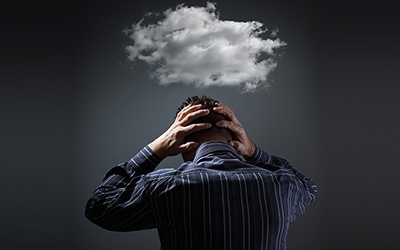
What are the types of anxiety disorders? What does a panic attack or anxiety attack feel like? All anxiety disorders share some general symptoms: Panic , fear , and uneasiness. Not being able to stay calm and still. Cold , sweaty , numb or tingling hands or feet.
Post Traumatic Stress Disorder (PTSD). Obsessive Compulsive Disorder (OCD). Panic disorder in regular panic attacks with not particular trigger. The most common classes of medications used to combat anxiety disorders are anti-anxiety drugs (such as benzodiazepines ), antidepressants , and beta-blockers. Other anxiety disorders include panic disorder, phobias, selective mutism, social anxiety disorder, and separation anxiety disorder.
Which Company Is Disrupting a $4Billion Dollar Industry? Read our Report and Find Out! Text us for free, confidential support. Several types of anxiety disorders exist: Agoraphobia (ag-uh-ruh-FOE-be-uh) is a type of anxiety disorder in which you fear. Panic Disorder is characterized by panic attacks.
Objective anxiety is fear. Such anxiety occurs in response to a real, external threat to the person. Our experts review the Best sellers. There are several types of anxiety disorder, including panic disorder, phobias, and social anxiety.
Treatment involves a combination of different types of therapy, medication, and counseling,. The causes tend to point to different issues as well. Thought-based anxiety attacks can be signs of generalized anxiety disorder. Situation-based anxiety attacks might can be symptoms of social phobias or social anxiety disorder.
Some anxiety attacks happen regardless of immediate external stimuli. Each anxiety disorder has different symptoms, but Ken Duckworth, M the medical director for the National Alliance on Mental Illness and an assistant professor of psychiatry at Harvard Medical School in Boston, says many people with these disorders can benefit from this three-pronged approach:. There are a number of anxiety disorders: including generalized anxiety disorder, specific phobia, social anxiety disorder, separation anxiety disorder, agoraphobia, panic disorder, and selective mutism.
The disorder differs by what in the symptoms. If your experiences meet certain criteria your doctor might diagnose you with a specific anxiety disorder. AHP, read about the signs and symptoms for each one. Find out more about AHP and living with the disease. Anxiety can be experienced in lots of different ways.
On one han it’s the most commonly recognized anxiety disorder in the world. It’s estimated that around million adults in the US are currently living with GAD. This also means that it’s one of the more well-funded and understood types of anxiety. The downside to GAD is that it’s a subtle, slow burn form of anxiety. Selective Mutism in Children.
People who have agoraphobia have a fear of certain places or situations. Generalized anxiety disorder (GAD) People with GAD experience constant anxiety. TYPES OF ANXIETY DISORDERS 1. GENERALIZED ANXIETY DISORDER (GAD) GA is the most common and widespread type of anxiety.

A phobia is an intense fear of something that really doesn’t pose a real. SOCIAL ANXIETY DISORDER. It is often directly related to other conditions, like obsessions and compulsions,. These drugs also encourage relaxation, and their effects take place within a few minutes. Among the benzodiazepines that may be prescribed for the treatment of anxiety are lorazepam, clonazepam, and diazepam.
Some of the brand names are Xanax, Librium, Valium, and Ativan. Individuals who suffer from panic disorder, SA or GAD may be prescribed benzodiazepines as part of their treatment plan. Sections one and two of the anxiety disorder test are designed to indicate an anxiety disorder, while sections three and four screen for conditions that may complicate anxiety disorders - such as depression or substance use.
If you answered mostly yes in any one section, or in the anxiety disorder quiz overall,.
No comments:
Post a Comment
Note: Only a member of this blog may post a comment.